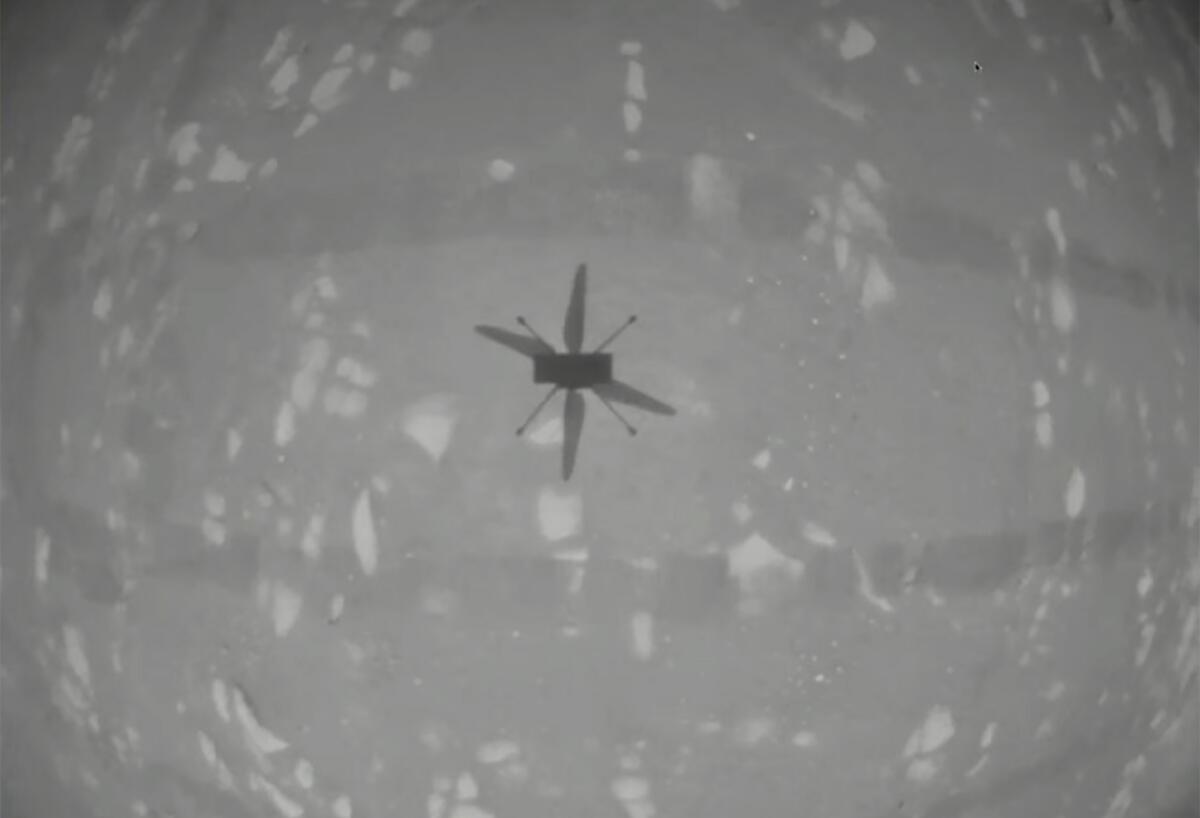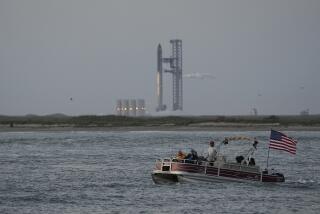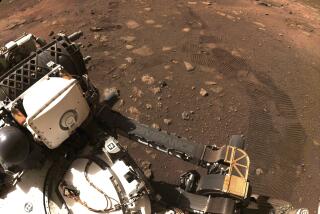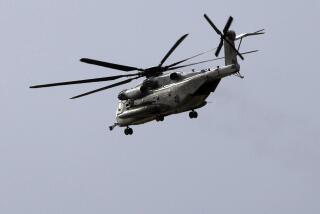Ingenuity, NASA’s helicopter that could, soars over Mars

Compared to the seven-month, 293-million-mile journey from Earth to Mars, a brief excursion 10 feet above the dusty surface of Mars might seem like an afterthought.
But this was a trip for the record books: the first-ever powered flight on another planet.
NASA’s Ingenuity helicopter spun its blades and rose above Mars’ Jezero Crater, where it arrived two months ago with the Perseverance rover.
Team members at NASA’s Jet Propulsion Laboratory in La Cañada Flintridge broke into applause hours before dawn Monday as they learned that Ingenuity had hit every mark in its planned flight — spin-up, take-off, climb, hover, descent, landing, touchdown and spin-down — without a hitch.
If NASA’s Perseverance rover lands safely on Mars, it will become the first space mission in nearly 45 years to directly search for signs of microbial life.
The clapping gave way to raucous cheers as Ingenuity’s chief pilot, Håvard Grip, announced that the altimeter data confirmed the experimental craft had indeed taken to the air.
Moments later, project manager MiMi Aung burst from her seat and shook both fists in triumph as the first image appeared: Ingenuity’s shadow in the Martian dust, taken by the copter while it was aloft.
In a dramatic gesture, Aung ripped up the printout of the speech she would have given had the exercise failed.
“Lucky for you I have a much shorter speech for success,” she joked to the team.
The first flight was hailed as a landmark by agency officials.
“This really is a Wright brothers moment,” NASA acting Administrator Steve Jurczyk said, referring to the historic 12-second flight at Kitty Hawk, N.C., in 1903 that ushered in the age of airplanes. In homage to that history, Ingenuity carried on board a tiny piece of wing fabric from the Wright Flyer.
Scientists cheered the news from around the world, and even from space.
“The shadow of greatness, #MarsHelicopter first flight on another world complete!” NASA astronaut Victor Glover tweeted from the International Space Station.
“A whole new way to explore the alien terrain in our solar system is now at our disposal,” said Nottingham Trent University astronomer Daniel Brown.
Ingenuity doesn’t look like any helicopter on Earth. It weighs less than 4 pounds, stands just 1.6 feet tall, and carries a payload of batteries, heaters and sensors that’s roughly the size of a tissue box. It has four spindly legs, two counter-rotating blades and a tiny solar panel that sits atop like a jaunty hat, allowing it to survive when temperatures dip to minus-130 degrees Fahrenheit.
When in flight, Ingenuity’s shadow gives the impression of an oversized, four-winged dragonfly. But the tiny craft is poised to make an enormous impact on space exploration.
JPL Director Michael Watkins compared Ingenuity to NASA’s Sojourner rover, which landed on Mars in 1997. While it only traveled about 100 meters (roughly 330 feet), the 25-pound pioneer paved the way for increasingly sophisticated and more powerful rovers. Perseverance, a 1.1-ton behemoth that will cache samples of Martian soil for future study by scientists on Earth, is its newest descendant.
Similarly, the flyweight copter is expected to lay the groundwork for more gravity-defying spacecraft capable of exploring other worlds in a totally new way.
For instance, helicopters can offer a bird’s-eye view of the surface of a planet or moon that no rover, lander or orbiter could provide.
Future fliers modeled after Ingenuity could serve as companion scouts for rovers or perhaps even astronauts exploring difficult terrain on other worlds.
“What the Ingenuity team has done is given us the third dimension,” Watkins said.
NASA and the European Space Agency have a complex plan to collect samples of Martian rock and soil and send them to Earth. Here’s how it will work.
The experimental craft’s success could set a pattern for missions to come, officials suggested.
“We should be doing these types of technology demonstrations on all our science missions,” Jurczyk said.
While the flight data came in around 3:46 a.m., the rover actually took off more than three hours earlier. Because any information must cross the 178 million miles currently between Earth and Mars via orbiting satellites and NASA’s Deep Space Network, the craft can’t be piloted in real time.
The flight itself was brief — lasting just 39.1 seconds and rising up to a height of about 10 feet without straying far from its rover companion, which was safely parked about 64 meters (210 feet) away.
But NASA officials say it’s just the start: The solar-powered copter has up to four more test flights planned, each meant to challenge the helicopter’s flying capabilities.
The $85-million rotorcraft was more than six years in the making, and with good reason: Flying on Mars is no easy task.
The atmosphere on Mars is less than 1% as thick as Earth’s. That makes it exceedingly difficult to generate enough lift to get airborne.
To overcome the problem, the engineers had to give the solar-powered craft extremely long rotor blades, resulting in a 4-foot wingspan for the tiny payload.
And while the craft had to be light — the foam-filled blades each weigh less than 2 ounces — they also had to be powerful, spinning fast enough to rotate at an average speed of 2,500 times per minute, said Taryn Bailey, a mechanical engineer on the Ingenuity team. (Helicopter blades on Earth, for comparison, spin at around 400 to 500 rpm, officials said.)
This was not Ingenuity’s first attempt to take flight: A software error related to what Aung described as an “intricate timing issue” prevented the helicopter from lifting off a week earlier. Engineers were forced to scramble to come up with a fix.
“Our team went into high gear” and chose a simple and straightforward solution to the problem, she said.
NASA’s Mars 2020 spacecraft sent back a striking image of the Perseverance rover suspended several feet above the red planet’s surface, just as it’s about to land.
Future flights will see Ingenuity cover some ground instead of simply rising and landing in the same spot. The craft could potentially test higher speeds, altitudes and distances.
Aung said she hopes to see the helicopter cover 600 to 700 meters, with Perseverance tracking its progress and relaying its data back to Earth. (Flight engineers affectionately call the duo Percy and Ginny.)
Ingenuity has just until early May to finish its test flights. After that, the rover is set to move on to other mission tasks, such as collecting rock samples that could hold evidence of past Martian life.
Until then, Aung said, the JPL team intends to put the helicopter through its paces: “We do want to push it to the limits.”
The Associated Press contributed to this report.







